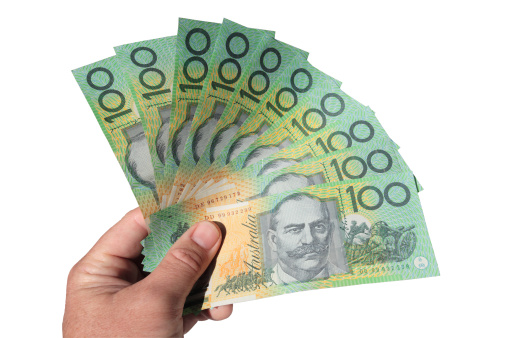Australian Dollar trade higher as Former RBA Governor Bernie Fraser share his views.
Australian Dollar pair gains momentum on Australia’s lackluster Consumer Inflation Expectations, which were announced on Thursday.
Furthermore, former Reserve Bank of Australia (RBA) Governor Bernie Fraser chastised the current RBA board for being unduly concerned with inflation at the detriment of the labour market. Fraser urged that the Board cut the cash rate, citing “recessionary risks” that could have serious effects for employment.
Consumer inflation expectations in Australia fell to 4.4% in September, a modest decrease from August’s four-month high of 4.5%.
The Australian The Australian dollar (AUD) strengthened against the US dollar (USD), as risk sentiment improved following the release of the US inflation report on Wednesday. The August US Consumer Price Index (CPI) statistics indicated that headline inflation fell to a three-year low, while core inflation outperformed expectations. This outcome increases the possibility that the Federal Reserve (Fed) will begin its easing cycle with a 25-basis-point interest rate drop in September.
On Wednesday, Sarah Hunter, the Reserve Bank of Australia’s (RBA) Assistant Governor for Economics, stated that high interest rates are depressing demand, resulting in a slight economic slump. Hunter also pointed out that the labor market remains tight relative to full employment levels, with employment growth expected to continue, albeit at a slower rate than Population growth, according to Reuters.
Daily Market Movers: Australian Dollar Maintains Strength Due to Improved Risk Sentiment.
According to the CME FedWatch Tool, markets fully expect the Federal Reserve to decrease interest rates by at least 25 basis points (bps) at its meeting in September. The possibility of a 50 basis point rate cut has dropped dramatically to 15.0%, down from 44.0% a week earlier.
Consumer inflation expectations in Australia fell to 4.4% in September, a modest decrease from August’s four-month high of 4.5%. This fall illustrates the central bank’s efforts to achieve a compromise between lowering inflation in a realistic timeframe and maintaining labor market growth.
US Consumer Price Index fell to 2.5% year on year, down from 2.9% the month before.
In August, the US Consumer Price Index fell to 2.5% year on year, down from 2.9% the month before. The The index fell short of the predicted 2.6% reading. Meanwhile, the headline CPI was up 0.2% month on month.
The US core CPI ex Food & Energy stayed constant at 3.2% YoY. On a monthly basis, core CPI increased to 0.3% from 0.2% previously.
According to a CNN survey, Harris won the first US presidential debate between former President Donald Trump and Democratic nominee Kamala Harris in Pennsylvania. The debate began with a critical examination of the economy, inflation, and economic policies.
Robin Xing, Morgan Stanley’s Chief China Economist, indicated that China is clearly experiencing deflation, which is likely to be in its second stage. According to Xing, Japan’s experience implies that the longer deflation lasts, the more China would need to implement strong stimulus measures. According to Business Standard, the goal is to solve the difficulty of debt deflation.
Australia’s Westpac Consumer Confidence decreased 0.5% month on month in September, following a 2.8% increase in August.
China’s Trade Balance reported a trade surplus of CNY 649.34 billion in August, up from the previous figure of CNY 601.90 billion. Meanwhile, Chinese exports (CNY) rose by 8.4% year on year, following a 6.5% gain the previous year.









